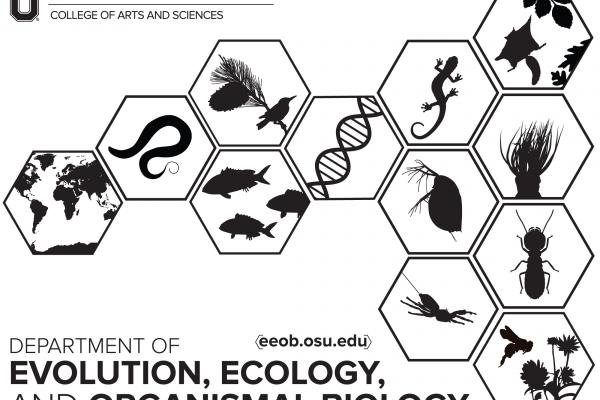Publications by EEOB faculty December 1 - December 31

Emergent sustainability in open property regimes
Mark Moritz, Roy Behnke, Christine M. Beitl, Rebecca Bliege Bird, Rafael Morais Chiaravalloti, Julia K. Clark, Stefani A. Crabtree, Sean S. Downey, Ian M. Hamilton, Sui Chian Phang, Paul Scholte, and James A. Wilson. 2018. DOI:10.1073/pnas.1812028115
Abstract
Current theoretical models of the commons assert that common-pool resources can only be managed sustainably with clearly defined boundaries around both communities and the resources that they use. In these theoretical models, open access inevitably leads to a tragedy of the commons. However, in many open- access systems, use of common-pool resources seems to be sustainable over the long term (i.e., current resource use does not threaten use of common-pool resources for future generations). Here, we outline the conditions that support sustainable resource use in open property regimes. We use the conceptual framework of complex adaptive systems to explain how processes within and couplings between human and natural systems can lead to the emergence of efficient, equitable, and sustainable resource use. We illustrate these dynamics in eight case studies of different social–ecological systems, including mobile pastoralism, marine and freshwater fisheries, swidden agriculture, and desert foraging. Our theoretical framework iden- tifies eight conditions that are critical for the emergence of sustainable use of common-pool resources in open property regimes. In addition, we explain how changes in boundary conditions may push open prop- erty regimes to either common property regimes or a tragedy of the commons. Our theoretical model of emergent sustainability helps us to understand the diversity and dynamics of property regimes across a wide range of social–ecological systems and explains the enigma of open access without a tragedy. We recom- mend that policy interventions in such self-organizing systems should focus on managing the conditions that are critical for the emergence and persistence of sustainability.
Predicting plant conservation priorities on a global scale
Tara A. Pelletier, Bryan C. Carstens, David C. Tank, Jack Sullivan, and Anahí Espíndola. 2018. PNAS 115 (51) 13027-13032. DOI:10.1073/pnas.1804098115
Abstract
The conservation status of most plant species is currently unknown, despite the fundamental role of plants in ecosystem health. To facilitate the costly process of conservation assessment, we developed a predictive protocol using a machine-learning approach to predict conservation status of over 150,000 land plant species. Our study uses open-source geographic, environmental, and morphological trait data, making this the largest assessment of conservation risk to date and the only global assessment for plants. Our results indicate that a large number of unassessed species are likely at risk and identify several geographic regions with the highest need of conservation efforts, many of which are not currently recognized as regions of global concern. By providing conservation-relevant predictions at multiple spatial and taxonomic scales, predictive frameworks such as the one developed here fill a pressing need for biodiversity science.
Radioisotope and stable isotope ratios (Δ14C, δ15N) suggest larval lamprey growth is dependent on both fresh and aged organic matter in streams
Abstract
Lampreys have a complex life cycle which includes a multi‐year infaunal larval stage (ammocoete). Gut content analysis has generally identified detritus (i.e., unidentifiable organic matter) as the major dietary component to ammocoetes, though algae can also be important. However, gut content preserves only a snapshot of the animal's diet and does not reflect assimilated material. In order to better characterise the nutritional sources supporting ammocoete growth, we analysed ammocoete body tissue and potential dietary sources at two streams using natural Δ14C and δ15N to estimate time‐integrated nutritional support. Bayesian isotope mixing models revealed differences in the importance of sources supporting ammocoetes between sites. Ammocoetes from a stream in a mixed land usage area (~50% agriculture, ~40% forest and ~10% developed) were primarily supported (mean: ~50%) by fresh terrestrial organic matter but were also supported by substantial contributions (mean: ~30%) by aged organic matter (AOM) and autochthonous material (algae; mean ~20%). In a predominantly forested (~90%) headwater stream, different modelling scenarios (uninformed or informed priors) suggested that algal support of ammocoete nutrition ranged from 7% to 45%. However, the model relying on informed priors developed from gut content analysis produced the low estimates, suggesting these were more reliable. When algae were a minor component of the nutrition at the forested site, ammocoetes were highly dependent on AOM (83 ± 26%; mean ± SD). Based on these findings, ammocoete growth and development are predicted to be strongly influenced by both land use and the availability of allochthonous and autochthonous materials of varying ages within streams.
